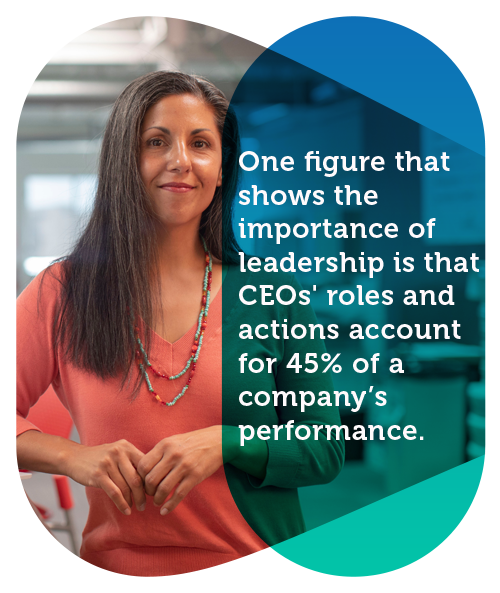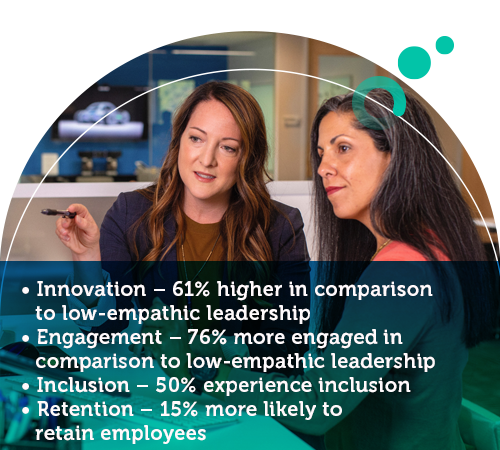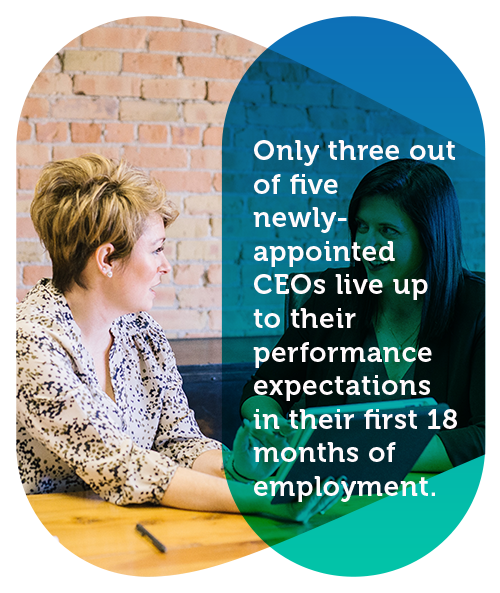
Dignity & Respect in The Workplace
Can dignity and respect in the workplace become a standard rather than an exception?


Content Specialist at Clark Staff

Co-founder & CEO of STADIUM & SnackMagic

Marketing Manager at Joloda Hydraroll

CEO of PhotoAiD

Burnout Specialist

Owner of Medicare Solutions Team

CEO & Founder of Breadnbeyond

Consultant & Executive Coach

CEO & Co-founder of SaleHoo

Co-Founder of Milkwhale

PR Specialist

New York Times Bestselling Author

Digital Marketing Manager at Virtudesk

Author of Trusted to Thrive

COO at Precondo
A global pandemic followed by high uncertainty and volatility has contributed to the rethinking of how we run organizations and, even more importantly, who runs them. As the work landscape is changing, leading the world’s organizations has never been as complex as it is today. Effective executive leadership helps businesses adapt, excel, and drive organizational growth.
An imperative for success.
This report explores a collection of perspectives from CEOs, authors, and other business professionals and delves deep into the trends and issues reshaping the C-suite today.
Leadership is broadly defined as the ability to direct and empower a group or organization toward achieving a common goal.
Beyond that statement, there is much confusion about what leaders are and what makes them effective. It is a difficult concept to define, perhaps because it means so many different things to different people.
So, what is executive leadership?
In business, executive leadership teams provide operational and strategic oversight to a company and its employees. Hence, under the “executive leadership” umbrella fall most senior positions in a company or the so-called C-suite.
While the exact responsibilities may vary between different senior positions in a company, generally, executive leaders work together to:
Think of the best leader you’ve heard of – it could be Gandhi, Bill Gates, Martin Luther King Jr, or Tim Cook. What makes these celebrated leaders stand out as the greatest?
Surprisingly, there is no straightforward answer.
Many assume that it is their charisma and charm; however, there are plenty of people with these traits that can’t lead.
To get a grasp of what good leadership is, one must know what good leadership isn’t:
One thing is certain, strong leadership requires an understanding of the complex mix of soft skills and hard skills that can inspire employees.
Iohan Chan, a Content Specialist for Clark Staff, offered an insightful perspective on leaders by saying, “We’ve all had a stand-out leader in our lives, whether it was from work, some school activity, or just a group activity where one person rallied everyone, resulting in some great success.
These people all share common traits that make them outstanding leaders. These traits will make people want to join your team due to your ability to manage properly. Great leaders will always lead by example, protect their team, and help their team grow both professionally and personally.
A good leader will stand out as their team will be both effective and happy within the workplace.”

One figure that shows the importance of leadership is that CEOs’ roles and actions account for 45% of a company’s performance.
When asked to describe their role, most C-suite executives reported their primary responsibilities revolve around leading talent, setting strategy, and championing culture and vision.
Undoubtedly, an executive leader is the most powerful, influential, and sought-after title. However, it is a role that as difficult as it is important.
The environment in which leaders manage their organizations seems to be getting more complicated and ever-changing. Organizational agility means crafting new competitive strategies or redefining business models to adapt to changes within that environment.
What’s more, there are now five different generations in the workplace for the first time in history. With these changes in demographics comes a change in preferred leadership style.
Shaunak Amin, Co-founder, and CEO of STADIUM & SnackMagic, highlighted how these changes influence leadership styles.
“Leadership has changed dramatically over the past few years.
Careers are becoming increasingly crucial in the search for self-fulfillment. And they’re also a means of self-expression as people align their personal and professional goals. As a result, we see frequent job changes, career breaks, and longer gaps between employment.
For this reason, a one-size-fits-all approach no longer fits in guiding your team.
Leaders and managers must now understand and adapt to the unique needs of each individual employee. This shift is causing conventional workplace models to become more flexible, cross-functional, and autonomous. And it requires leaders to act as boss and coach, keeping each team member focused on their objectives while allowing them the freedom to self-direct- and even self-lead.
This kind of democratic leadership empowers employees to create a better work/life balance for themselves while, at the same time, developing their loyalty.”
Despite all the scrutiny leaders go through, there is little knowledge about what CEOs really do to excel. To answer the question “how to be a good leader and manager,” we examined all the qualities and responsibilities concerning the CEO’s role.
There is a long-standing nature vs. nurture debate regarding the qualities of a good leader.
Is leadership learned or an innate gift that only a select few possess?
While personal charismatic traits may contribute to becoming a good leader, strong leadership relies on core competencies that can be learned. Undoubtedly, industry knowledge, experience, and training are all essential for success.
Our research has narrowed down the most commonly contributed qualities a leader must have to succeed.

Empathy and understanding in the workplace are no longer just a nice-to-have element but rather a strategic imperative.
Findings suggest that highly-empathic leadership is an essential driver of:
An expert overview provided by Gary Warner, Marketing Manager at Joloda Hydraroll, notes, “The makings of a good leader should demonstrate empathy for your employees – ensure you can walk the walk and talk the talk on the “shop floor.”
He adds, “Managers that can demonstrate a level of understanding towards the task their team is performing tend to build better relationships. The employees will feel reassured that they can take any issues to their leaders, and they will genuinely understand the problem. On the flip side, they know that the manager will truly appreciate it when they complete the job or go above and beyond.”
Tomek Mlodzki, CEO of PhotoAiD, explains this quality further by sharing, “One of the leadership gurus, Stephen Covey, said: “be a light, not a judge.”
Without people following you, you can be a boss, but you are not a leader.
I believe that the inherent trait of a good leader and manager is empathy. It’s the foundation of interpersonal relations, whose unique form is leadership.
Great leaders are open enough to understand the motivations, hopes, dreams, and problems of others to develop deep personal contact with them. This understanding is the essence of empathy. It’s a mindset that enables leaders to make better forecasts, improve work strategies, and generate team loyalty.
Developing your emotional intelligence is one of the best leadership qualities.
Very few leaders understand the difference between being “polite” and having emotional intelligence. Only an effective leader understands the power of empathy towards the people he leads.”
The economic shock of the pandemic caused global labor shortages and supply chain disruptions. However, the pandemic’s long-term effects also impacted employees’ mental health, raising burnout and stress levels.
Now, employees are looking for managers, leaders, and companies to:
Good leadership means showing genuine concern about the well-being of your people as they are more than just an output and performance number.
Burnout Specialist Sarah Vizer explains the importance of leading by example when it comes to self-management by noting, “From my perspective as a burnout specialist, one of the key behaviors that makes a good leader is to lead by example in their own wellness behaviors.
Examples include maintaining a life outside of the workplace, regular self-care routines, and seeking assistance when necessary.
If they don’t do this, we see instead leaders feeling the effects of high stress and burnout, maybe trying to hide this from those around them. Stress can be catching, and a stressed-out leader is often the cause of burnout for those they lead.”
As Loran Marmes, Owner of Medicare Solutions Team, outlines, “The first quality of a good leader is self-awareness.
Self-aware leaders know their strengths and weaknesses and understand where they need to improve. They also know how to read their own emotions and how they might affect those around them. This allows them to be more understanding and compassionate when leading others.”
Relationships with supervisors, bosses, and leaders are ranked as one of the top factors for employees’ job satisfaction.
Relationships with management are vital drivers for organizational performance, and leaders must have exceptional “people” skills.
Andre Oentoro, CEO and Founder of Breadnbeyond, highlighted the importance of having strong interpersonal skills.
“The key to a solid, great leadership is not only developing the ability to build relationships, but great leaders know how to develop and maintain strong relationships.
Because of this, a great leader is also a great communicator.
Leaders who communicate their vision and inspire others to achieve common goals are usually the most successful. Communication here is a two-way street, as the leader must be able to listen to and understand the needs of those they are leading.”
Consultant and Executive Coach Sara Sheehan comments, “Leadership requires nurturing your followers or creating followership.”
She adds, “The leader needs to be a person that others want to know, like, and trust. Developing followership is an art.
The best leaders at this are in touch with their teams, and they know them well. They have personal relationships with them that endure over time.

So, what makes a good leader?
The topic of executive leadership has been extensively studied and debated in countless articles, books, and literature.
While there are various competing theories for dominance, the standard leadership models include many styles, such as:

In recent years we have also heard of purposeful leaders, conscious leaders, visionary leaders, inclusive leaders, and so on. Seems like everyone has an idea of what qualities and traits are essential for the making of a successful leader.
With so many approaches and models, it is hard for companies to architect the framework, mindsets, practices, and experiences they need for executive education and, consequently, CEO excellence.
If we look back and search for outstanding leadership through history, we find some of the most used examples involve:
Effective organizational leadership isn’t a simple formula that can be copied as it depends on many factors. What worked for Lou Gerstner and Greg Brenneman will not work for organizations today.
Good leadership is mainly situational and requires employing different styles, initiatives, and strategies to match the company’s needs.
In their response, Simon Slade, CEO, and co-founder of SaleHoo, summarized the essence of leadership.
“Leadership is complicated.
While a good leader will always solicit and consider input from the team, there are also times when a decision needs to be made quickly and firmly without outside influence.
A big part of being an effective leader is knowing how to be fluid with different leadership styles and when to use each style for the benefit of your team. There are times when you need to be firm, clear, and independent, while there are other times you need to blend in with your team as a fellow colleague and not “the boss.”
There are other times still that you need to blend into the background and become a fly on the wall, letting your team flourish and blossom in their own right, without the heavy formality of leadership.”
Today’s leaders are not just meant to manage companies; they must navigate whole ecosystems.
The emphasis is no longer just on the company’s bottom line but also on establishing corporate purpose.
Responsible leadership calls for creating a sustainable and equitable world through DEI initiatives, well-being and mental health, and paying attention to ESG concerns.
However, being the face of a company comes with high expectations.
The role of an executive leader can be stressful, lonely, and all-consuming. Leaders constantly face relentless scrutiny from all stakeholders – directors, shareholders, employees, and consumers. Therefore, it is no surprise that findings suggest that only three out of five newly-appointed CEOs live up to their performance expectations in their first 18 months of employment.

Ebnu Sudarso, Co-Founder of Milkwhale, gives an insightful response to the challenges leaders face by saying, “One of the most important things every leader should have is an open mind. It can be hard to be open to criticism and public opinion when you have worked your way up the corporate ladder.
As a result, it can be a bit difficult to accept criticism or different opinions.
This can hinder your ability to grow since you wouldn’t be open to change. Leaders who continue to learn from others despite their position are more likely to grow and help others achieve their goals.”
Additionally, Kate Engler, a PR specialist, shared her experience with executive leadership. She said, “For me, leadership is about how the leader acts rather than what they say. If a leader owns their mistakes and apologizes, it creates an environment of trust and respect – and also gives the team permission to own their errors too and then fix them (rather than ducking and weaving and burying the error, which inevitably makes it worse).”
In the workplace, leaders get results not by doing all the work themselves but by creating the conditions for others to succeed. Some of the conditions that leaders create that make them succeed are:
The most effective leaders do not use formal authority to accomplish their work but instead use advocacy. In fact, it’s not about having the right people and top talent that makes or breaks an organization, but rather how a leader can bring out their best qualities.
New York Times Bestselling Author Laura Doyle affirms this sentiment, “Leadership is about inspiring people to do things they never thought they could do and encouraging them to keep trying after setbacks. The best leaders do this so well that it looks effortless, but in reality, the key ingredient to inspiration is much harder than it appears.
What is the essential component, you ask?
Removing criticism from your vocabulary and actions.
No matter how well-meaning “constructive” criticism is, it ultimately breeds self-doubt and negatively affects someone’s self-esteem. You can’t inspire someone if they feel you are attacking them. Instead of pointing out someone’s shortcomings, focus on what they did well and offer help in the areas that need improvement.
Show don’t tell is a powerful adage.”
Typically, high-performance leaders accompany high-performing teams as they display an unwavering commitment to results.
These leaders have the ability to transform teams and help employees grow through formal ways like introducing learning management systems and informal guidance in the form of coaching and mentorship.
Audrey Sommer, Digital Marketing Manager at Virtudesk, has witnessed firsthand what it takes to manage employees. She shared, “Something that I have learned in my role as a manager is that you have to give people the benefit of the doubt. Assume that the people you’re managing are genuinely trying their best and 90% of the time, putting forth their best effort.
If you become frustrated with them because they aren’t submitting their work the right way or it’s not as quality as you want, be understanding and provide mentorship and feedback.
Plus, you were probably in their shoes not too long ago (or at some point in your life), so it doesn’t make sense to be self-righteous.”
Trust and cooperation are not inherent in organizations but instead built over time. Surprisingly, research shows that one in three employees do not trust their leaders or employers. A good manager must instill a sense of trust and confidence and empower subordinates by setting attainable goals.
Marie-Claire Ross, Author of the book Trusted to Thrive, shared, “In my research and work with leaders, I have found trusted leaders are able to finely balance creating both a psychologically safe and accountable team culture.
This occurs when a team leader creates stretch goals and challenges direct reports to improve and strongly believes they can achieve.
They treat employees like elite athletes pushing them to continually improve – breaking their best records, not by a few degrees but through dramatic improvement.
Employees work in a supportive environment where they work together to break their records daily. This only works when the leader leads by example, has high expectations and belief in their team, works hard to ensure they are trusted by the team, and encourages team members to trust one another.”
Leaders, especially those in the C-suite, must mobilize subordinates, managers, and colleagues. Samantha Odo, COO at Precondo, commented on the relationship between middle management and leadership.
She said, “A good leader innovates and creates a policy and a good manager makes sure the workforce follows those policies. The leader has a vision, and the manager makes the employees work towards that vision.
A good leader is responsible for leading the business’s progress and success.
While a good manager will organize and assign work to the employees that lead to the business thriving.
A good leader inspires the team while the manager motivates it.”
The purpose of strong executive leadership is to propel businesses forward even in times of change. As the speed of change continues to accelerate, effective leadership is crucial for organizations wishing to stay ahead.
Browse our curated list of vendors to find the best solution for your needs.
Subscribe to our newsletter for the latest trends, expert tips, and workplace insights!

Can dignity and respect in the workplace become a standard rather than an exception?

Transform your workplace into an inclusive and empowering environment for women with these eye-opening statistics. Unlock the potential of gender diversity and drive positive change in your organization.

Creating a safe and inclusive society is impossible when the workplace does not reflect that. Thus, corporate America has some catching up to do when it comes to LGBTQ+ inclusion in the workplace.

What happens when four different generations collide in the workplace, and what does it mean to have a multigenerational labor force?
Used by most of the top employee benefits consultants in the US, Shortlister is where you can find, research and select HR and benefits vendors for your clients.
Shortlister helps you reach your ideal prospects. Claim your free account to control your message and receive employer, consultant and health plan leads.